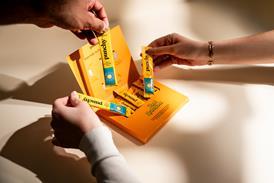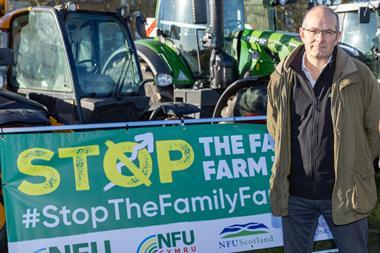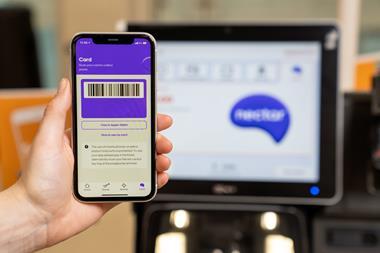Pampered pooches and pussy cats are in for a merry little Christmas, as owners are treating their pets as part of the family, says Mick Whitworth
It will be a merry little Christmas this year for Britain’s pampered pets - according to Masterfoods, maker of Pedigree and Whiskas, 95% of pet owners will buy a festive gift for their pooch and 89% for their pussy cat.
This means about 14 million pets will find a gift under the tree on December 25 - further proof that, as Town and Country Petfoods marketing controller Peter Parkinson puts it, “people are treating their animals as one of the family”.
It’s no wonder, then, that a string of other trends familiar across grocery - such as health, convenience and premiumisation - are driving the petfood market too.
Catfood and dogfood sales through grocery channels are currently worth £1.67bn [TNS 52 w/e August 14, 2005], up 3% year-on-year despite flat volumes. The pet population is broadly static but owners - especially of cats - are spending more and more on an increasingly sophisticated range of products.
The past year has seen Masterfoods, for example, launch Cesar Cuisine (for dogs) and Sheba Creation and Sheba Dome (for cats), describing them as gourmet pet meals based on Mediterranean-influenced recipes. And its close rival, Nestlé Purina, has caused a stir with launches such as Felix ‘As Good At It Looks’ that it claims looks like food consumers might cook for themselves.
Developments have been slower in dogfood. Owners are reluctant to experiment (no-one wants a dog with an upset stomach) and also know their pets will wolf down whatever’s put in front of them. But the arrival of near human-quality grilled or roasted meat dishes for the more pernickety cat population has left some producers wondering what’s left to try.
Town & Country pioneered super-premium high meat content catfoods in the 1980s with the HiLife brand, competing on an ‘ours is better than yours’ platform. Over the past 12 months, says Parkinson, Masterfoods and Purina have each launched products as good as, if not better than, HiLife. “We may be seeing a topping out in terms of quality,” he says. “They’re basically selling chicken breast in a can.”
Further premiumisation is likely to focus on formats - “playing with the technology and how you present the product”.
Nestlé Purina customer development manager Toby Lancaster says: “It’s the cosmetic appeal and anthropomorphic qualities of these products that are driving consumer demand. They tap into the owner’s desire for petfood that looks like something they might have prepared themselves.”
The market as a whole continues to move towards convenience and single-serve formats, as well as dry food, particularly as the quality and health credentials of products have improved. Again, though, the story is different for cats
and dogs.
According to TNS, complete dry catfood is up 4.6% in value, while complete dry dog is up 1.3%. “But it’s not direct swapping from wet to dry,” says Lancaster. “It’s more an increased level of mixing. We’re time poor, so we’ll put down dry in the morning but maybe feed wet in the evening.”
Brekkies maker Affinity Petcare’s UK sales manager Allan Huddart says: “The UK is Europe’s largest catfood market but has the lowest level of dry usage. We call that a clear opportunity.”
In wet formats, pouches have been slower to catch on in the dogfood sector, with only 8% of owners choosing this format compared with 30% of cat owners [TGI, June 2005].
“Dogfood, in general, is just a slower burn on everything,” says Parkinson. “But people are gradually buying into the concept.”
Nestlé Purina and Pedigree Masterfoods continue to dominate the fixture, claiming eight of the top 10 brands (excluding own label) between them, with only Iams (Procter & Gamble) and Butcher’s edging in at 8th and 9th respectively. But smaller brands are starting to assert themselves.
Value dry dogfood brand Wagg has just run its first regional TV campaign as part of a seven-figure marketing campaign, after upgrading from a muesli-style to a fully extruded product. Town & Country has also been on TV for the first time with its super-premium catfoods and says it has seen a sustained 25-30% uplift even in stores with no promotional activity.
And Brekkies, the premium dry catfood range, is bouncing back after the failure of distributor Food Brokers earlier this year, with upgraded packaging and a £1.5m marketing spend. “We’re playing with the big boys now,” says Huddart.
It will be a merry little Christmas this year for Britain’s pampered pets - according to Masterfoods, maker of Pedigree and Whiskas, 95% of pet owners will buy a festive gift for their pooch and 89% for their pussy cat.
This means about 14 million pets will find a gift under the tree on December 25 - further proof that, as Town and Country Petfoods marketing controller Peter Parkinson puts it, “people are treating their animals as one of the family”.
It’s no wonder, then, that a string of other trends familiar across grocery - such as health, convenience and premiumisation - are driving the petfood market too.
Catfood and dogfood sales through grocery channels are currently worth £1.67bn [TNS 52 w/e August 14, 2005], up 3% year-on-year despite flat volumes. The pet population is broadly static but owners - especially of cats - are spending more and more on an increasingly sophisticated range of products.
The past year has seen Masterfoods, for example, launch Cesar Cuisine (for dogs) and Sheba Creation and Sheba Dome (for cats), describing them as gourmet pet meals based on Mediterranean-influenced recipes. And its close rival, Nestlé Purina, has caused a stir with launches such as Felix ‘As Good At It Looks’ that it claims looks like food consumers might cook for themselves.
Developments have been slower in dogfood. Owners are reluctant to experiment (no-one wants a dog with an upset stomach) and also know their pets will wolf down whatever’s put in front of them. But the arrival of near human-quality grilled or roasted meat dishes for the more pernickety cat population has left some producers wondering what’s left to try.
Town & Country pioneered super-premium high meat content catfoods in the 1980s with the HiLife brand, competing on an ‘ours is better than yours’ platform. Over the past 12 months, says Parkinson, Masterfoods and Purina have each launched products as good as, if not better than, HiLife. “We may be seeing a topping out in terms of quality,” he says. “They’re basically selling chicken breast in a can.”
Further premiumisation is likely to focus on formats - “playing with the technology and how you present the product”.
Nestlé Purina customer development manager Toby Lancaster says: “It’s the cosmetic appeal and anthropomorphic qualities of these products that are driving consumer demand. They tap into the owner’s desire for petfood that looks like something they might have prepared themselves.”
The market as a whole continues to move towards convenience and single-serve formats, as well as dry food, particularly as the quality and health credentials of products have improved. Again, though, the story is different for cats
and dogs.
According to TNS, complete dry catfood is up 4.6% in value, while complete dry dog is up 1.3%. “But it’s not direct swapping from wet to dry,” says Lancaster. “It’s more an increased level of mixing. We’re time poor, so we’ll put down dry in the morning but maybe feed wet in the evening.”
Brekkies maker Affinity Petcare’s UK sales manager Allan Huddart says: “The UK is Europe’s largest catfood market but has the lowest level of dry usage. We call that a clear opportunity.”
In wet formats, pouches have been slower to catch on in the dogfood sector, with only 8% of owners choosing this format compared with 30% of cat owners [TGI, June 2005].
“Dogfood, in general, is just a slower burn on everything,” says Parkinson. “But people are gradually buying into the concept.”
Nestlé Purina and Pedigree Masterfoods continue to dominate the fixture, claiming eight of the top 10 brands (excluding own label) between them, with only Iams (Procter & Gamble) and Butcher’s edging in at 8th and 9th respectively. But smaller brands are starting to assert themselves.
Value dry dogfood brand Wagg has just run its first regional TV campaign as part of a seven-figure marketing campaign, after upgrading from a muesli-style to a fully extruded product. Town & Country has also been on TV for the first time with its super-premium catfoods and says it has seen a sustained 25-30% uplift even in stores with no promotional activity.
And Brekkies, the premium dry catfood range, is bouncing back after the failure of distributor Food Brokers earlier this year, with upgraded packaging and a £1.5m marketing spend. “We’re playing with the big boys now,” says Huddart.













No comments yet